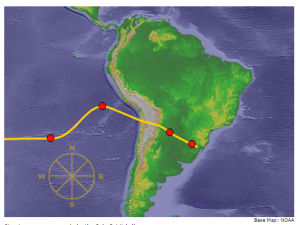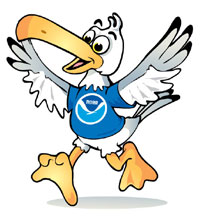Hi Gang! Just had to share this site I just found – Star Tool Box at NASA: http://solarsystem.nasa.gov/StarToolBox It’s Solar System Exploration and beyond!
This site is AWESOME! You could spend hours exploring this site; it is filled with fun and fascinating information.
The following is a post from Jane Houston Jones at NASA:
Find NASA tools and resources for armchair astronomers as well as for solar system and deep sky observers. Check back often as different members of our team populate the toolbox with their favorite tried and true resources!
By Jane Houston Jones
Welcome to NASA’s Star Toolkit! Each month we’ll provide content related to significant astronomical happenings and useful links.
Here are informational links for the targets mentioned in NASA’s October What’s Up Astronomy Podcast. This monthI’m listing my Top Ten favorite observing targets (in reverse order). Most can be seen without a telescope!
Here’s a little more information on each object:
 As the sun sets, watch its color. At sunset and sunrise, NASA’s Sun-Earth Page
As the sun sets, watch its color. At sunset and sunrise, NASA’s Sun-Earth Page
 This is called Earth Shadow, or the Belt of Venus.
This is called Earth Shadow, or the Belt of Venus.
 Also just after sunset (or before dawn) you may see rays of sunlight spread like a fan. These are crepuscular rays, formed when sunlight streams through gaps in clouds or mountains.
Also just after sunset (or before dawn) you may see rays of sunlight spread like a fan. These are crepuscular rays, formed when sunlight streams through gaps in clouds or mountains.
 The bright flowing lights of the aurora borealis, or northern lights, are the result of collisions between gaseous particles in Earth’s atmosphere with charged particles released from the sun. Check the Space Weather
The bright flowing lights of the aurora borealis, or northern lights, are the result of collisions between gaseous particles in Earth’s atmosphere with charged particles released from the sun. Check the Space Weather
 The Andromeda Galaxy is one of the few galaxies you can actually see with your naked eye. In October, look nearly overhead after sunset. The galaxy is more than twice the apparent width of the moon – so big that it barely fits in the field of view of a telescope at medium magnification. Check out Hubble’s View
The Andromeda Galaxy is one of the few galaxies you can actually see with your naked eye. In October, look nearly overhead after sunset. The galaxy is more than twice the apparent width of the moon – so big that it barely fits in the field of view of a telescope at medium magnification. Check out Hubble’s View
 Monday October 19 is Astronomy Night at the White House, and the days around the 19th are excellent nights to view features on the moon such as the Sea of Tranquility and the site of the 1969 Apollo 11 landing. Moon Landing Sites
Monday October 19 is Astronomy Night at the White House, and the days around the 19th are excellent nights to view features on the moon such as the Sea of Tranquility and the site of the 1969 Apollo 11 landing. Moon Landing Sites
 This month the European Space Agency’s Rosetta MissionEuropean Space Agency’s Rosetta Mission target, comet 67P Churyumov-Gerasimenko, is still bright enough for experienced astronomers to pick out in a dark sky. You will definitely need a telescope to see this faint comet.
This month the European Space Agency’s Rosetta MissionEuropean Space Agency’s Rosetta Mission target, comet 67P Churyumov-Gerasimenko, is still bright enough for experienced astronomers to pick out in a dark sky. You will definitely need a telescope to see this faint comet.
 There are meteor showers galore this month – The faint, slow moving Draconids on the 9th, the slow, super-bright Taurids on the 10th, and the swift and bright Orionids from the dust of Comet Halley on the 21st. More: NASA’s All-Sky Fireball Network and Meteoroid Environment Office
There are meteor showers galore this month – The faint, slow moving Draconids on the 9th, the slow, super-bright Taurids on the 10th, and the swift and bright Orionids from the dust of Comet Halley on the 21st. More: NASA’s All-Sky Fireball Network and Meteoroid Environment Office
 On October 28th, you’ll find a tight pairing of Jupiter, Venus and Mars in the Eastern sky before sunrise.
On October 28th, you’ll find a tight pairing of Jupiter, Venus and Mars in the Eastern sky before sunrise.
 I’ll end this list with my very favorite astronomical sight — the Zodiacal Light. It’s a faint triangular glow seen from dark skies after sunset or before sunrise. What we’re seeing is sunlight reflecting off dust grains that circle the sun in the inner solar system! These dust grains travel the same pathway — called the ecliptic — as the moon and planets as they journey across our sky.
I’ll end this list with my very favorite astronomical sight — the Zodiacal Light. It’s a faint triangular glow seen from dark skies after sunset or before sunrise. What we’re seeing is sunlight reflecting off dust grains that circle the sun in the inner solar system! These dust grains travel the same pathway — called the ecliptic — as the moon and planets as they journey across our sky.
Be sure to check out this site for yourself: http://solarsystem.nasa.gov/StarToolBox
Let your Curiosity be satisfied – go Explore the site and Discover our solar system and deep space. Can Adventure by far behind?
After all that is what being a CAE Discovery club member is all about: Curiosity, Adventure, Exploration and Discovery!
![]() https://www.classzone.com/books/earth_science/terc/navigation/home.cfm
https://www.classzone.com/books/earth_science/terc/navigation/home.cfm






 http://www.si.edu/
http://www.si.edu/






 The Andromeda Galaxy is one of the few galaxies you can actually see with your naked eye. In October, look nearly overhead after sunset. The galaxy is more than twice the apparent width of the moon – so big that it barely fits in the field of view of a telescope at medium magnification.
The Andromeda Galaxy is one of the few galaxies you can actually see with your naked eye. In October, look nearly overhead after sunset. The galaxy is more than twice the apparent width of the moon – so big that it barely fits in the field of view of a telescope at medium magnification. 





